Top 10 long-lived animals that are over 10,000 years old or have amazing immortality

Harriet the giant
The longest living animals on Earth | Live Science
https://www.livescience.com/longest-living-animals.html
◆10th place: Bowhead whale (more than 200 years)
Bowhead whales (Balaena mysticetus) are the longest-lived mammals, with some bowhead whales in the wild being over 100 years old, and it is estimated that some may live over 200 years. I am. Bowhead whales have a mutation in the gene that encodes a protein called ERCC1 , which is involved in repairing damaged DNA, and this may have saved them from dying from cancer.
.jpg)
◆9th place:
The aleutianus (Sebastes aleutianus), which lives off the coast of California and the waters around Japan, is one of the longest-living fishes, with a lifespan of over 205 years. According to research by the Canadian Commission on the Current Status of Endangered Wildlife , the body length of the Aramenukes is 38 inches (approximately 97 cm). They are carnivorous and live mainly on shrimp and small fish.

8th place:
Margaritifera margaritifera is a shellfish that mainly lives in rivers in Europe and North America. According to the World Wildlife Fund, the longest-lived known specimen was a specimen discovered in Sweden that was 280 years old. Although the Honkawa Shinjugai has a very slow metabolism and has a long lifespan, its population has decreased due to environmental destruction in rivers in recent years, and it is considered an endangered species.
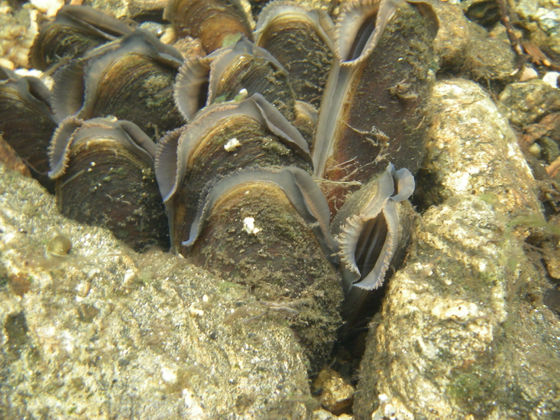
◆7th place:
The Somniosus microcephalus is a shark that lives in the deep waters of the Arctic Ocean and the North Atlantic Ocean, eating a variety of animals from marine mammals such as seals to fish. A study published in the academic journal Science in 2016, which used radiocarbon dating to determine the age of the Japanese shark from its crystalline lens, found that ``The largest individual among the research subjects was about 392 years old, and a short estimate was 272 years old, and the oldest. It is possible that he was still alive at the age of 512.''

6th place: Tube worm (300 years)
Tubeworms are invertebrates that live on the cold, calm ocean floor of the deep ocean. According to a study published in 2017, Escarpia laminata , a type of tube worm that lives on the ocean floor of the Gulf of Mexico, can live for 200 years even in normal individuals, and 300 years in particularly long-lived individuals. Tubeworms are thought to have evolved into such long-lived creatures because they have a low mortality rate and have no predators.
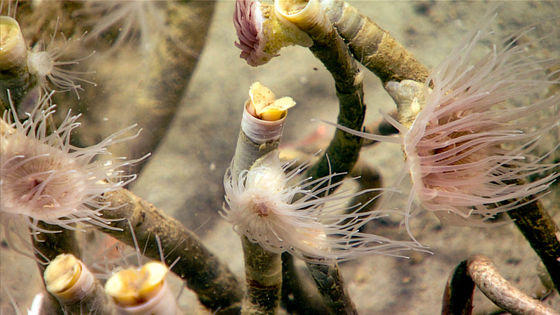
by
5th place: Iceland Guy (507)
The Icelandic mussel (Arctica islandica), which lives in the North Atlantic, is a common edible bivalve in the North Atlantic coastal region, but it has a longer lifespan than the above-mentioned Japanese clam. According to the National Museum of Wales in the United Kingdom, the specimen discovered off the coast of Iceland in 2006 is 507 years old, making it the longest-lived individual non-colonial animal.
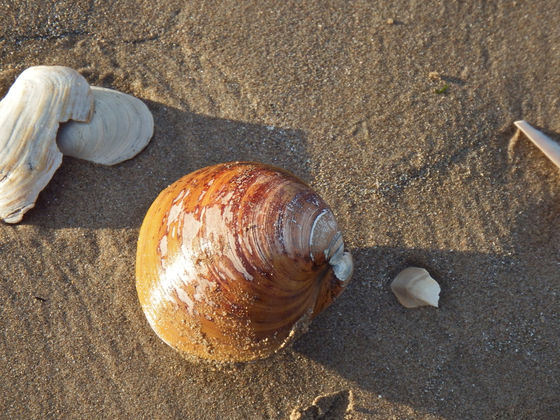
by
◆4th place: Horned coral (4265)
At first glance, corals look like trees or rocks, but they are actually made up of the skeletons of invertebrates called polyps. These polyps multiply by creating clones, which are genetically identical copies, and grow their skeletons over a long period of time. Therefore, it can be said that the longevity of corals is made possible by the 'teamwork of multiple identical organisms.' If the entire coral were considered to be a single living organism, it is said that its lifespan would reach several hundred years or more, but a coral of the genus Leiopathes discovered off the coast of Hawaii in 2009 was announced to be 4,265 years old. I've been there before.
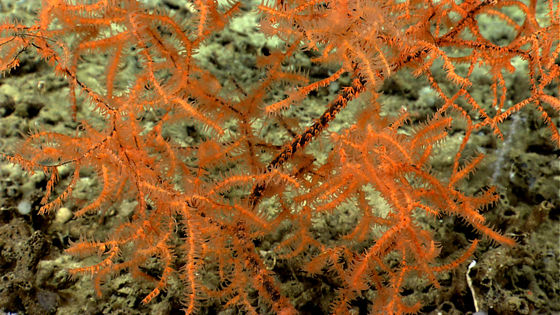
by
◆3rd place: Glass sponges (11,000 years)
Porifera are a type of primitive invertebrate that can live for thousands of years. Among them, a study in 2012 revealed that Monorhaphis chuni, a type of glass sponge, can live up to 11,000 years.

◆2nd place:
Jellyfish emerge from eggs as larvae, settle on the ocean floor, become polyps, and eventually swim in the ocean as adults called medusas. However, the jellyfish Turritopsis dohrnii, a type of jellyfish, can rejuvenate by reverting to a polyp when faced with a critical situation such as physical damage or lack of food, so it is theoretically possible to live forever. About.
However, although Turritopsis dohrnii can reverse its life history and rejuvenate, it is small at about 4.5 mm and can die from factors such as predation, so it is virtually impossible for Turritopsis dohrnii to achieve immortality in the natural environment. It is said that it is possible.

by
1st place: Hydra (theoretically immortal)
Hydra is an invertebrate that lives in freshwater, and like jellyfish, it uses tentacles with poisonous stingers called nematocysts to catch and eat water fleas and other things. Hydra, like Turritopsis dohrnii, is theoretically said to be immortal, but unlike Turritopsis dohrnii, which escapes lifespan through rejuvenation, Hydra, whose entire body is mostly made up of stem cells , ages even as the years pass. He is not showing any signs of. Therefore, although they may die from predation in their natural environment, they literally have the potential to be immortal in an environment free of external threats, such as in captivity.
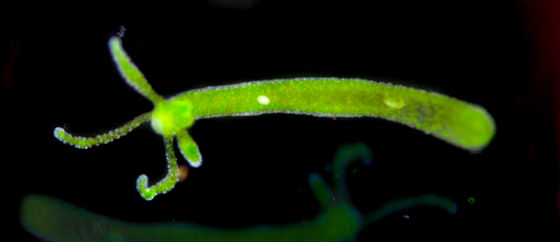
by Jasper Nance
Related Posts:







